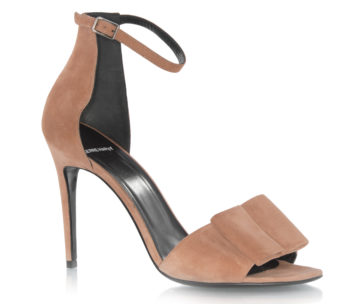If you’ve been paying attention to what’s happening in the clean beauty movement right now, you’ve probably heard the term “endocrine disruptor” before — and if not, you’ve definitely come into contact with at least a few of these disruptive little particles. But what exactly are endocrine disruptors, and why should you care? I’m glad you asked.
Your endocrine system is made up of all the hormone-producing glands in your body, so “endocrine disruptors” do just that: They disrupt this internal system and in turn, disrupt your hormone levels. Considering the fact that your hormones control everything from your metabolism to your sex drive to your fertility, sleep, mood, and skin, having them “disrupted” isn’t ideal. In fact, it’s straight-up dangerous.
Not to scare you (well, OK, maybe to scare you just a little bit), but endocrine-disruptive substances are everywhere: in plastic products, food packaging, the water supply, and — the one I’m going to focus on today — cosmetics. Some repeat offenders include BPAs, parabens, phthalates, triclosan and triclocarban, oxybenzone and octinoxate, glycol ethers, and pesticides.
The Top Hormone Disruptors In Cosmetics
A lot of mainstream beauty products feature the aforementioned endocrine disruptors. Why? Because many of them are also preservatives that work to extend the shelf life of serums, moisturizers, and face masks — BPAs, parabens, triclosan and triclocarban, and phthalates fall into this category. Phthalates often aren’t listed on ingredient labels, either, because they can legally be bundled into the vague term “fragrance.”
Oxybenzone and octinoxate are two heavy-hitting hormone disruptors that were recently banned from sunscreens, since the substances were shown to be damaging to coral reefs (and if they’re hurting the tough coral reefs, imagine what they’re doing to your soft skin). While these ingredients shouldn’t be a problem going forward, check any older bottles of sunscreen you have on hand to make sure they’re oxy- and octi-free.
Glycol ethers are often used as solvents in cosmetics, and will appear on ingredient labels as 2-butoxyethanol (EGBE) or methoxydiglycol (DEGME). Even natural ingredients may have been exposed to a type of pesticide known as organophosphate, a proven endocrine disruptor. This won’t show up on an ingredient label, of course, so the only way to cut it out of your routine is to opt for USDA Certified Organic products.
Why To Avoid Them
You already know that endocrine disruptors mess with your hormones, but you may be wondering what that looks like for you and your body. The answer isn’t necessarily simple, though.
Some endocrine disruptors, like BPA, trick the body into thinking they’re estrogen — which can result in everything from acne to obesity to breast cancer. Others target testosterone and can lead to fertility issues; these include glycol ethers and phthalates.
Over time, the cumulative effects of endocrine disruptors can also trigger autoimmune diseases, thyroid issues, diabetes, allergies, and chronic inflammation.
How To Avoid Them
There are two main ways to eliminate hormone disruptors from your life: Avoid plastics and go organic. Plastics contain a large proportion of the particles we now know to be harmful, like BPAs and parabens, so it’s a wise choice to opt for glass or stainless steel options whenever possible. And since food and natural cosmetics may be contaminated with preservatives or pesticides that fall under the disruptive umbrella, choosing certified organic food and beauty products can certainly help.
When shopping for new makeup, hair care, or skincare, look for labels like “paraben-free” and “phthalate-free.” Cross-check the ingredients listed with the EWG’s Skin Deep Database, which rates the toxicity level of nearly every substance used in the industry.
Finally, it can be helpful to “detox” your body every once in a while with a cleanse. Endocrine disruptors accumulate internally over time, and by flushing out the liver and digestive system, you can help the body eliminate any harmful substances. Because honestly, as women, we deal with enough hormonal problems as it is — we don’t need to add endocrine disruptors to the mix.




















